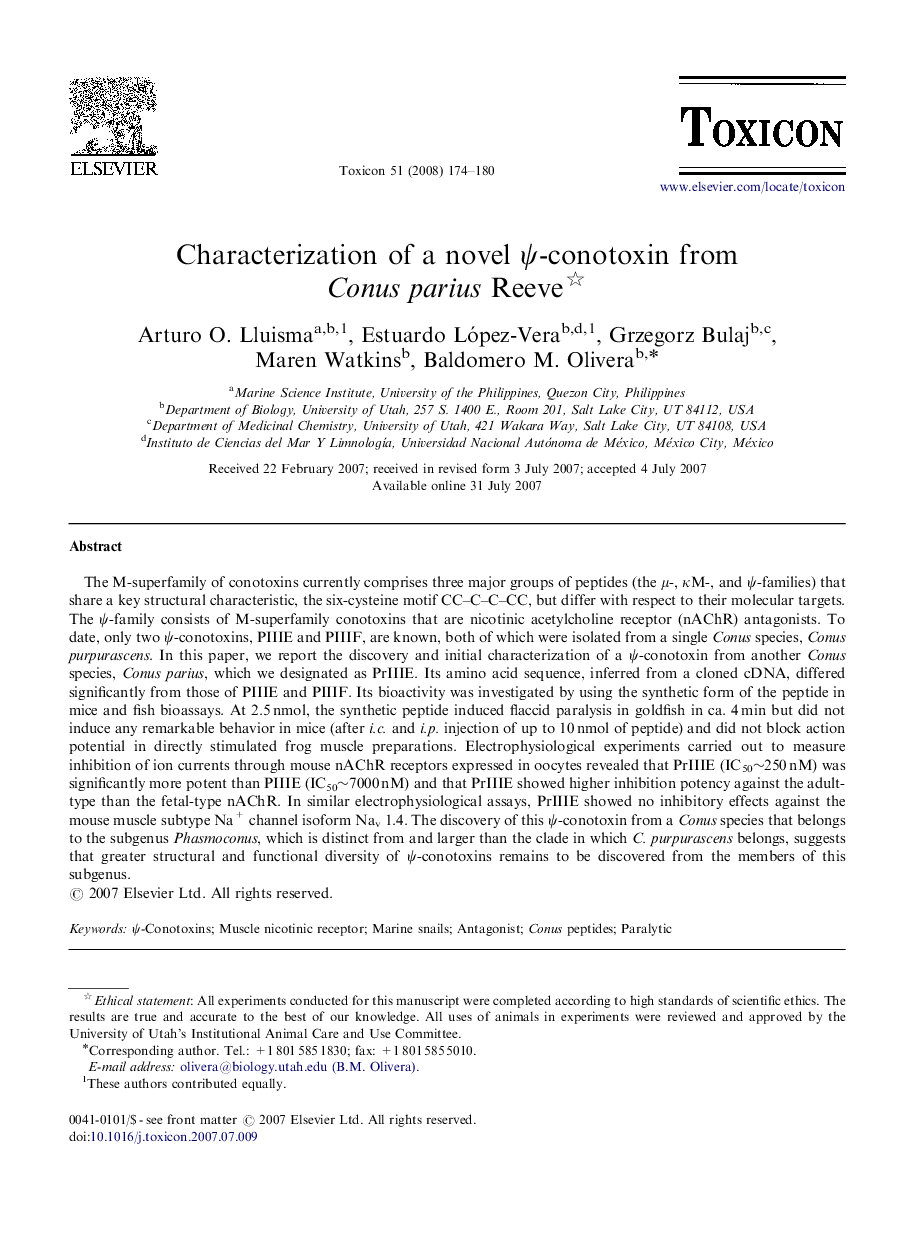| کد مقاله | کد نشریه | سال انتشار | مقاله انگلیسی | نسخه تمام متن |
|---|---|---|---|---|
| 2065978 | 1076953 | 2008 | 7 صفحه PDF | دانلود رایگان |

The M-superfamily of conotoxins currently comprises three major groups of peptides (the μ-, κΜ-, and ψ-families) that share a key structural characteristic, the six-cysteine motif CC–C–C–CC, but differ with respect to their molecular targets. The ψ-family consists of M-superfamily conotoxins that are nicotinic acetylcholine receptor (nAChR) antagonists. To date, only two ψ-conotoxins, PIIIE and PIIIF, are known, both of which were isolated from a single Conus species, Conus purpurascens. In this paper, we report the discovery and initial characterization of a ψ-conotoxin from another Conus species, Conus parius, which we designated as PrIIIE. Its amino acid sequence, inferred from a cloned cDNA, differed significantly from those of PIIIE and PIIIF. Its bioactivity was investigated by using the synthetic form of the peptide in mice and fish bioassays. At 2.5 nmol, the synthetic peptide induced flaccid paralysis in goldfish in ca. 4 min but did not induce any remarkable behavior in mice (after i.c. and i.p. injection of up to 10 nmol of peptide) and did not block action potential in directly stimulated frog muscle preparations. Electrophysiological experiments carried out to measure inhibition of ion currents through mouse nAChR receptors expressed in oocytes revealed that PrIIIE (IC50∼250 nM) was significantly more potent than PIIIE (IC50∼7000 nM) and that PrIIIE showed higher inhibition potency against the adult-type than the fetal-type nAChR. In similar electrophysiological assays, PrIIIE showed no inhibitory effects against the mouse muscle subtype Na+ channel isoform Nav 1.4. The discovery of this ψ-conotoxin from a Conus species that belongs to the subgenus Phasmoconus, which is distinct from and larger than the clade in which C. purpurascens belongs, suggests that greater structural and functional diversity of ψ-conotoxins remains to be discovered from the members of this subgenus.
Journal: Toxicon - Volume 51, Issue 2, February 2008, Pages 174–180